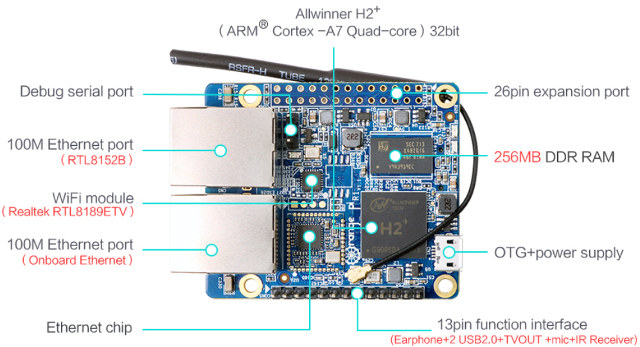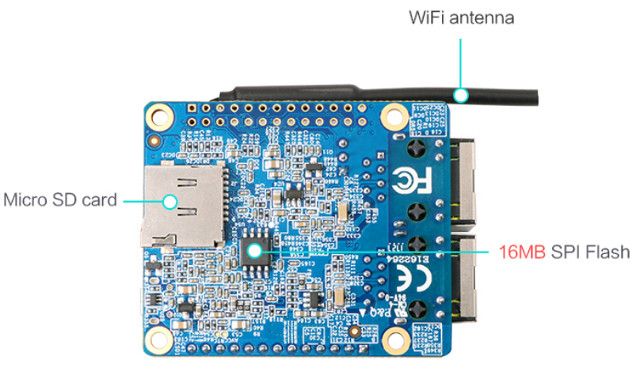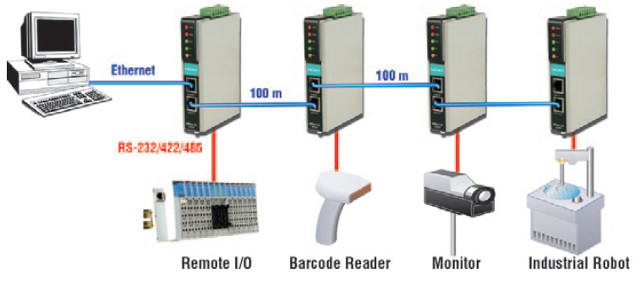Shenzhen Xunlong has introduced the new Orange Pi R1 board with Allwinner H2+ quad core Cortex A7 processor that’s a bit different from their other models, as it includes two 10/100M Ethernet port, and should be suitable for intelligent controllers, or simple IoT gateways.

Orange Pi R1 board specifications:
- SoC – Allwinner H2(+) quad core Cortex A7 processor @ 1.2 GHz with Mali-400MP2 GPU
- System Memory – 256 DDR RAM
- Storage – micro SD card slot, 16 MB SPI flash
- Connectivity – 2x 10/100M Ethernet (including on via RTL8152B USB to Ethernet) + 802.11 b/g/n WiFi (Realtek RTL8189ETV) with u.FL antenna connector and external antenna
- USB – 1x micro USB OTG port
- Expansion headers
- Unpopulated 26-pin “Raspberry Pi B+” header
- 13-pin header with headphone, 2x USB 2.0, TV out, microphone and IR receiver signals
- Debugging – 3-pin header for serial console
- Power Supply – 5V via micro USB port
- Dimensions – 60 x 45 mm
 Since it’s based on the same Allwinner H2+ processor as on Orange Pi Zero board, the extra Ethernet port is implemented via USB, and the I/O headers looks to be the same, it should be possible to run Armbian images on the board without that many modifications. The board may not be the best solution for small router, as there are already many cheap OpenWrt compatible routers that should do the job just as well, but thanks to the expansion header, it may make a useful intelligent controller or ModBus gateway to manage relays, sensors, robots, etc…
Since it’s based on the same Allwinner H2+ processor as on Orange Pi Zero board, the extra Ethernet port is implemented via USB, and the I/O headers looks to be the same, it should be possible to run Armbian images on the board without that many modifications. The board may not be the best solution for small router, as there are already many cheap OpenWrt compatible routers that should do the job just as well, but thanks to the expansion header, it may make a useful intelligent controller or ModBus gateway to manage relays, sensors, robots, etc…

If you have the kind of cascaded setup above, the 16MB SPI flash could save you the use of micro SD card, with network boot either from the control PC (if it is always on), or one of the Orange Pi R1 fitted with a micro SD card.
Orange Pi R1 board is sold for $13.90 plus shipping ($17.29 in total here) on Aliexpress.
Thanks to Anton for the tip

Jean-Luc started CNX Software in 2010 as a part-time endeavor, before quitting his job as a software engineering manager, and starting to write daily news, and reviews full time later in 2011.
Support CNX Software! Donate via cryptocurrencies, become a Patron on Patreon, or purchase goods on Amazon or Aliexpress




